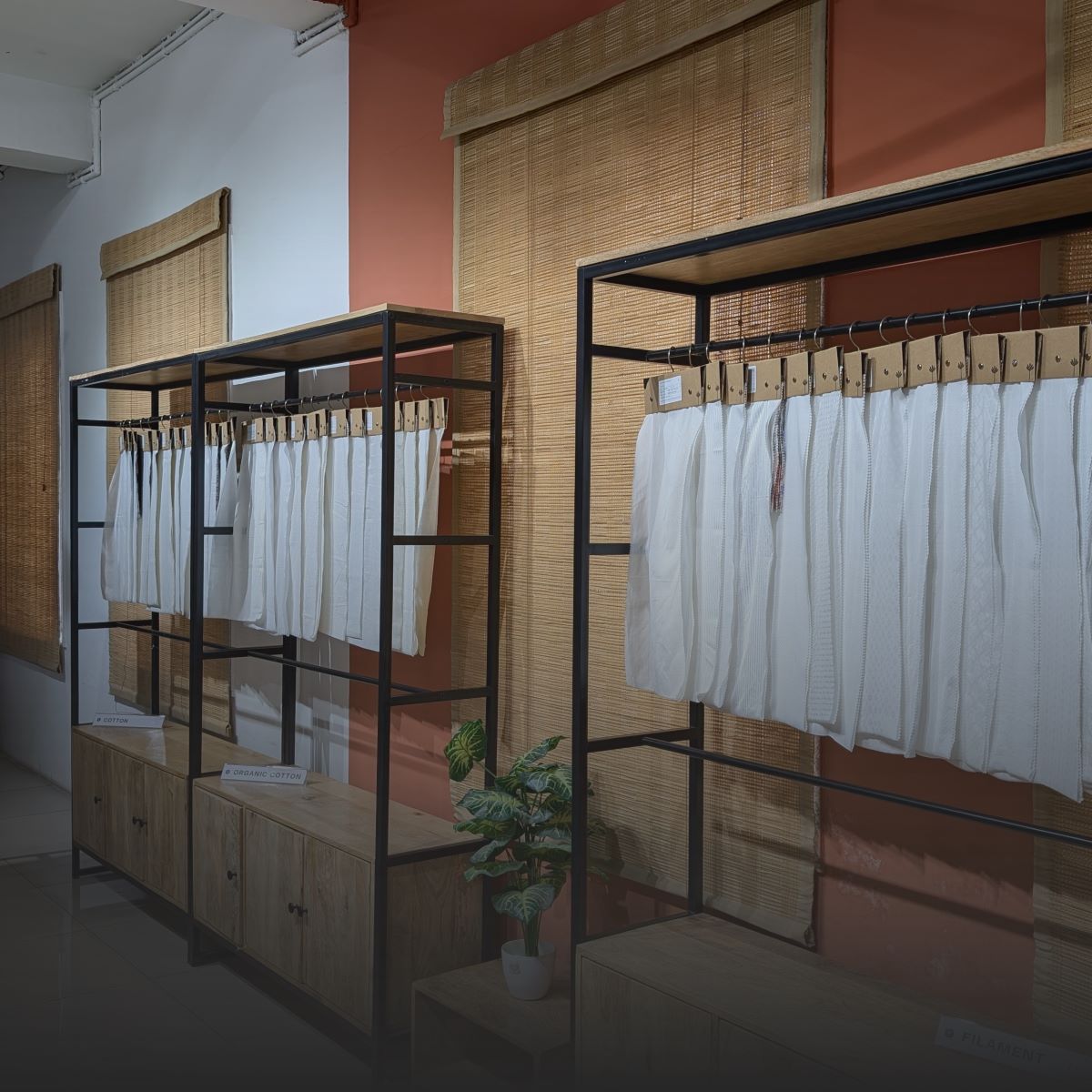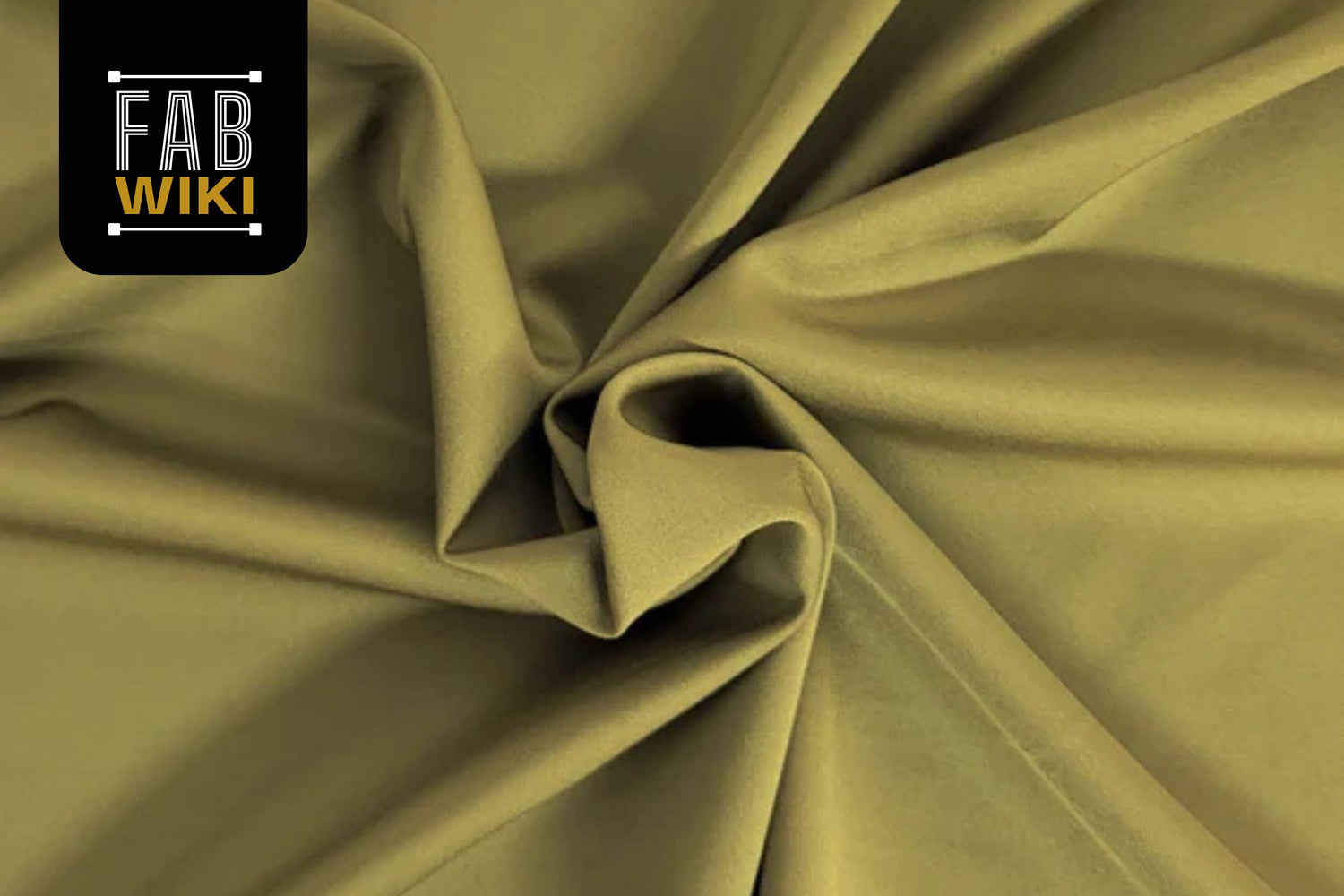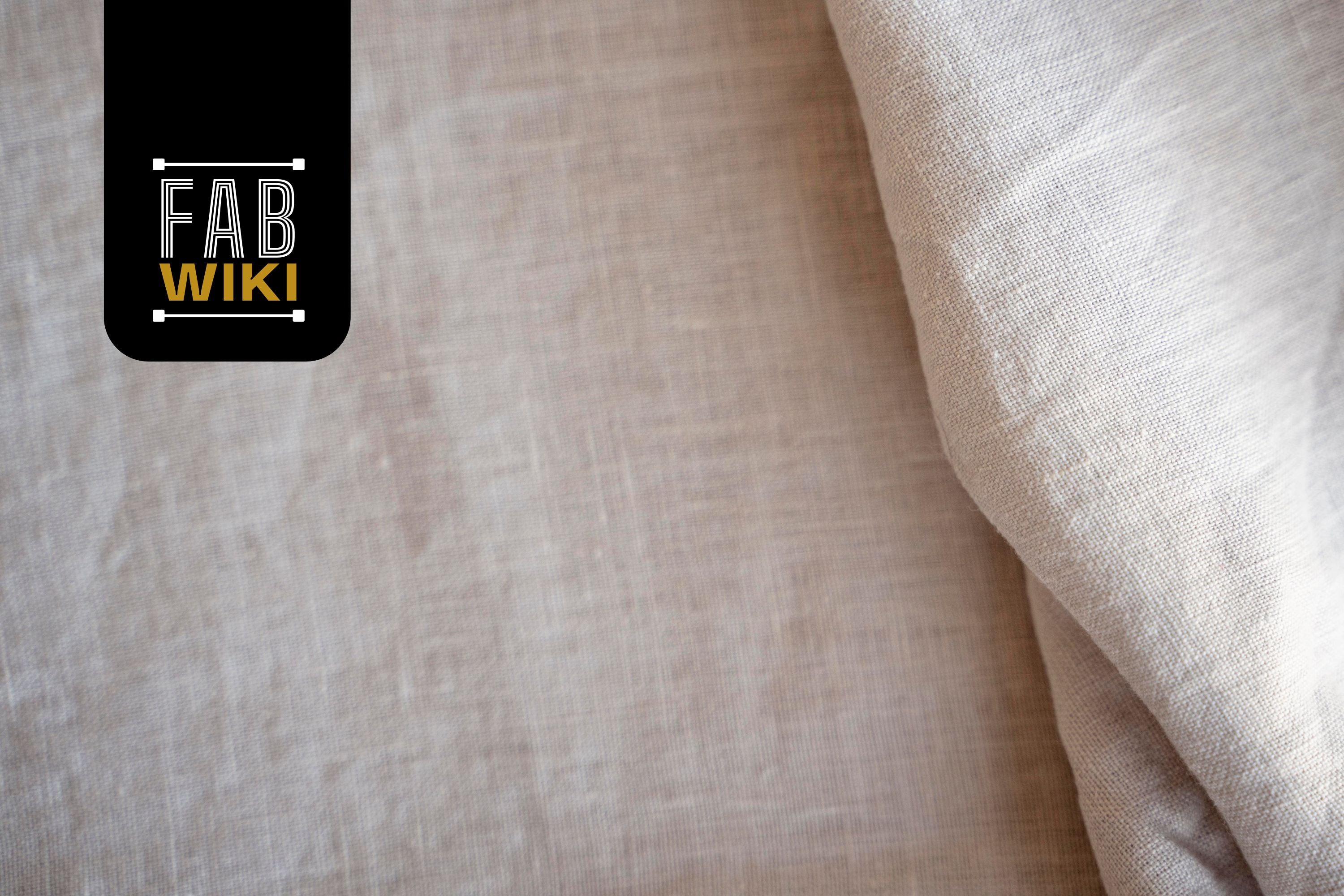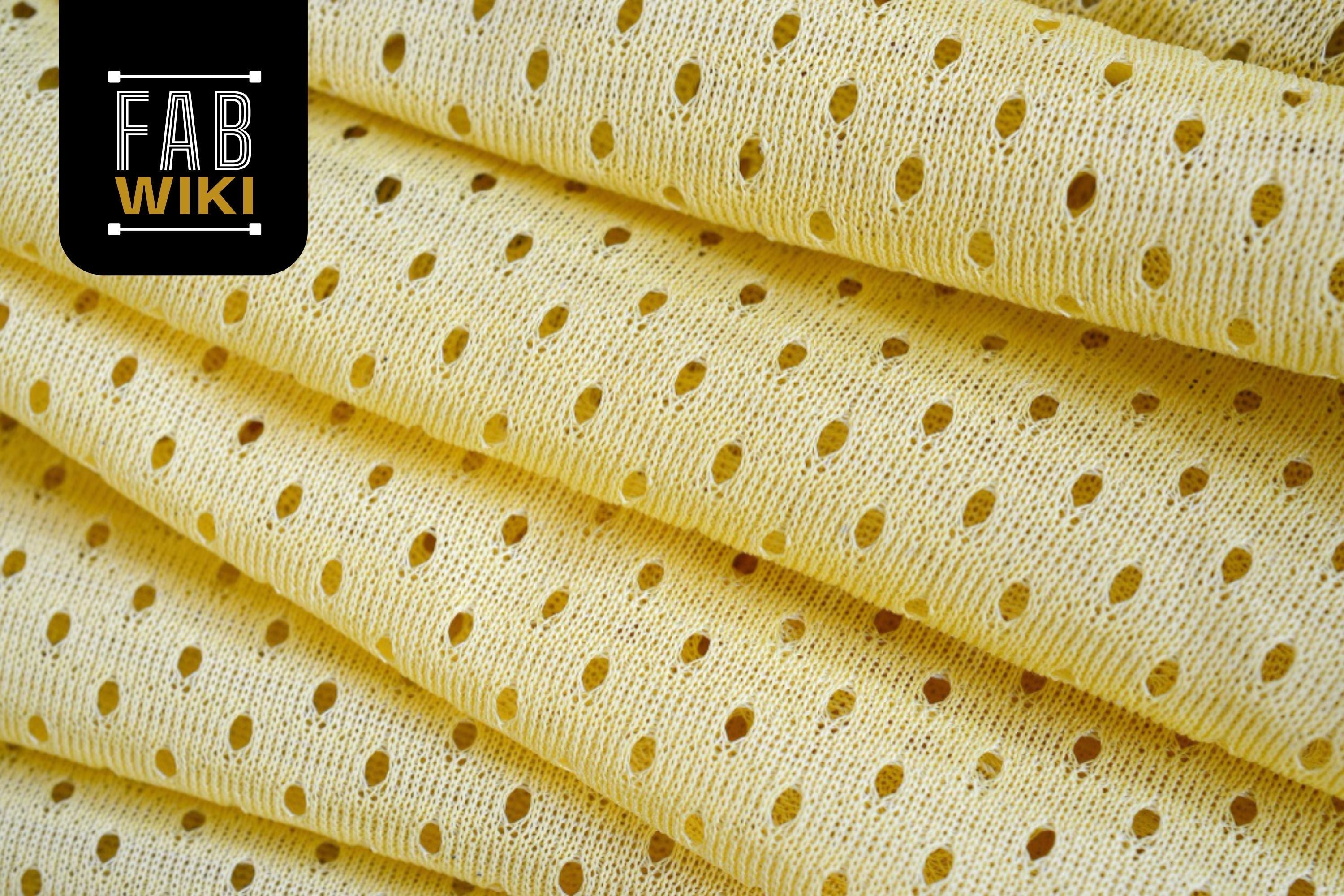Polyamide fabric has shaped the textile industry for nearly a century. From the first nylon stockings that revolutionised women's fashion in the 1930s to today's recycled polyamide activewear, this synthetic fibre has stood the test of time. It is also popular for its strength, elasticity, durability, and most versatile fabrics ever created.
In this guide, we'll explore its history and background, how it's made, its unique properties, advantages, disadvantages and common applications, which are reshaping its future.
What Is Polyamide Fabric?
Polyamide fabric is a synthetic polymer made from petroleum-derived chemicals. Its structure is built from repeating amide bonds (-CONH-), which give the fibre strength and flexibility. The most well-known type of polyamide fabric is nylon, invented in the 1930s as the first fully synthetic fibre.
Unlike natural fibres such as cotton, wool, or silk, polyamide doesn't come from plants or animals. Instead, it is produced through controlled chemical processes, making it a thermoplastic polymer—a material that softens when heated and can be reshaped.
The flexibility of Polyamide's fabric makes it important not just in fashion, but also in sportswear, upholstery, industrial textiles, and safety equipment.
A Brief History of Polyamide

The story of Polyamide's fabric begins in a laboratory, but it quickly became one of the most influential fabrics of the 20th century. Its journey from silk substitute to global textile powerhouse is remarkable. Let's explore:
- 1935: Wallace Carothers and his team at DuPont developed the first nylon (polyamide 6,6).
- 1938: Nylon is patented and marketed as the first fully synthetic fibre.
- 1940s: During World War II, nylon was used for parachutes, tents, ropes, and uniforms, leading to a civilian shortage.
- 1950s–60s: Nylon expands into sportswear, upholstery, and industrial textiles, becoming a symbol of modern living.
- Today, Polyamide remains one of the most widely used synthetic fibres, accounting for around 12% of global fibre production.
Key Properties of Polyamide Fabric
Polyamide fabrics are loved for their performance features:
- Polyamide Fabric is highly resistant to wear, tear, and abrasion because of its strength and durability.
- Elasticity & Recovery: Stretches with movement and returns to shape, making it perfect for hosiery and activewear.
- Lightweight Comfort: Offers softness without heaviness.
- Moisture Absorption: Absorbs 3–8% of its weight in moisture, reducing sweat buildup compared to polyester.
- Colour Retention: Excellent dyeing properties keep colours vibrant over time.
- Wrinkle & Shrink Resistance: Holds its shape and requires little ironing.
- Thermal Resistance: Withstands moderate heat but is sensitive to very high temperatures.
- Chemical Resistance: Resists oils, solvents, and many chemicals, adding to its durability.
How Polyamide Fabric Is Made

The procedure of polyamide fabric involves several steps, which include:
Polymerization
- Nylon 6,6 is made from adipic acid and hexamethylenediamine.
- Nylon 6 is made from caprolactam.
- These monomers are polymerized into long chains of repeating molecules.
Extrusion
The molten polymer is forced through spinnerets (fine nozzles) to create continuous filaments.
Cooling and Drawing
The filaments are cooled and stretched, aligning the molecules and increasing strength and elasticity.
Texturing
Fibres are twisted or crimped to add stretch, softness, and bulkiness.
Dyeing and Finishing
Polyamide fibres absorb dyes well, creating vibrant colours that last wash after wash.
Types of Polyamide Fabric
Polyamide fabric comes in various forms, and each one has its own unique functionality, which includes:
Polyamide 6 (Nylon 6):
- Made from caprolactam.
- Known for elasticity and softness.
- Common in hosiery, leggings, and swimwear.
Polyamide 6,6 (Nylon 6,6):
- Made from adipic acid and hexamethylenediamine.
- Stronger and more heat-resistant than Nylon 6.
- Used in technical garments, ropes, seatbelts, and upholstery.
Aramids (Kevlar & Nomex):
- High-performance polyamides.
- Kevlar: bulletproof vests, ropes.
- Nomex: fire-resistant gear for firefighters and the military.
Meryl:
- A luxury version of polyamide with a silky finish.
- Popular in lingerie and premium activewear.
Recycled Polyamide (e.g., ECONYL®):
- It is built from industrial waste, old fishing nets and carpets.
- Offers the same performance as virgin nylon but with reduced environmental impact.
Advantages and Disadvantages of Polyamide Fabric
Polyamide fabric is widely used in fashion and industrial applications due to its durability and flexibility. However, like any textile, it has both advantages and disadvantages that buyers and designers should consider.
|
Advantages |
Disadvantages |
|
Extremely durable and long-lasting |
Not eco-friendly: Derived from petroleum, non-biodegradable |
|
Elastic and flexible for body-fitted garments |
Heat sensitivity: Can melt under high ironing or tumble-drying |
|
Quick-drying, ideal for swimwear and activewear |
Microfiber pollution: Releases microplastics during washing |
|
Better colour retention with vibrant shades |
Less breathable: Can feel hot compared to natural fibres like cotton or linen fabric |
|
Wrinkle-resistant, lightweight, and easy to maintain |
Prone to pilling: Small balls of fibre may form with friction and wear |
|
Versatile for both fashion and industrial applications |
Yellowing: Tends to discolour under prolonged sunlight exposure |
Polyamide vs Other Fabrics
|
Property |
Polyamide |
Polyester |
Cotton |
Silk |
|
Durability |
Very High |
High |
Medium |
Medium |
|
Softness |
Smooth, silky |
Moderate |
Natural softness |
Luxurious |
|
Moisture-Wicking |
Good |
Moderate |
Excellent |
Moderate |
|
Breathability |
Moderate |
Moderate |
Excellent |
Excellent |
|
Eco-Friendliness |
Low |
Low–Moderate |
High |
High |
|
Cost |
Affordable |
Affordable |
Moderate |
Expensive |
👉 Insight: Polyamide fabric is stronger and more flexible than polyester but less breathable than cotton and silk.
Common Applications of Polyamide Fabric

Polyamide fabric is used in nearly every sector:
- Fashion & Apparel: Stockings, tights, lingerie, swimwear, seamless wear.
- Sportswear: Leggings, cycling shorts, yoga pants, sports bras.
- Industrial Textiles: It can be used as ropes, nets, airbags, seatbelts, and parachutes.
- Protective Clothing: Kevlar vests, Nomex fire-resistant suits.
- Medical Applications: Surgical sutures, bandages, orthopaedic supports.
- Home Textiles: Carpets, rugs, curtains, upholstery.
- Automotive: Car interiors, seat covers, flooring.
Final Thoughts
Polyamide fabric is a foundation of the textile industry, as it combines strength, stretch, and versatility. From luxury lingerie to industrial safety gear, it continues as one of the most broadly used synthetic fibres.
On the other hand, traditional polyamide fabric raises concerns regarding sustainability, but the rise of recycled and bio-based polyamide fabrics promises a greener future. Therefore, for designers, manufacturers, private labels and textile enthusiasts, polyamide fabric always remains a better preference when it comes to durability, comfort, and performance.
FAQs
1. What Is Polyamide Fabric Made Of?
Polyamide fabric is built through a chemical process that uses petroleum-based raw materials. For example, Nylon 6,6 is made from adipic acid and hexamethylenediamine, while Nylon 6 is made from caprolactam. These compounds are polymerized, extruded into filaments, and processed into yarns, resulting in a fabric that is durable, elastic, and versatile.
2. Is Polyamide Fabric Breathable?
Polyamide fabric is moderately breathable compared to natural fibres like cotton fabric or linen fabric. It has moisture-absorbing properties, allowing it to wick sweat away from the body and dry quickly. However, because it is synthetic, it does not offer the same level of airflow as natural fabrics, which may make it feel warmer in hot climates.
3. Can Polyamide Be Machine-Washed?
Mostly, polyamide fabrics are safe for machine washing. However, while washing, always keep in mind that the best and safest technique is to use cold or lukewarm water on a gentle cycle with mild detergent. High heat should be avoided, as it can damage the fibres. Although air drying is recommended, tumble drying on low heat is acceptable.
4.What Is the Difference Between Nylon 6 and Nylon 6,6?
Nylon 6 and Nylon 6,6 are both types of polyamide fabric but differ in composition and performance. Nylon 6 is made from caprolactam, giving it more elasticity and softness, making it ideal for clothing. Nylon 6,6 is made from adipic acid and hexamethylenediamine, offering higher strength, durability, and thermal resistance, which makes it suitable for industrial textiles and technical uses.
5. Is Polyamide Fabric Eco-Friendly?
Virgin polyamide fabric is not considered eco-friendly because it is made from non-renewable petroleum and produces greenhouse gas emissions during the time of production, as it is non-biodegradable and contributes to microfiber pollution. However, it is made from waste materials such as fishing nets and carpets, helping reduce environmental impact while offering the same performance.
We also happen to be a magnet for suggestions, and would love to catch yours….throw us yours on hello@fabriclore.com




